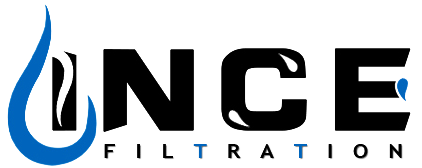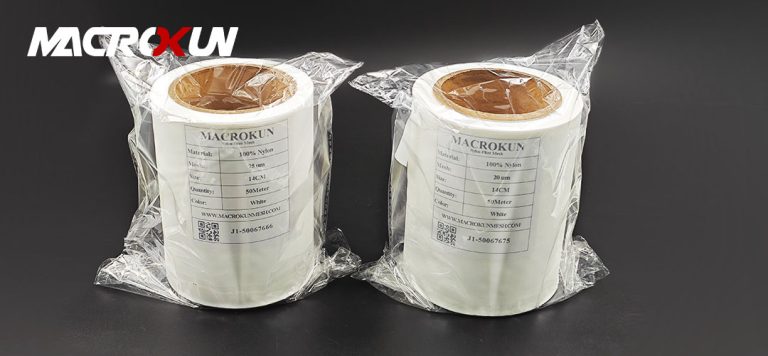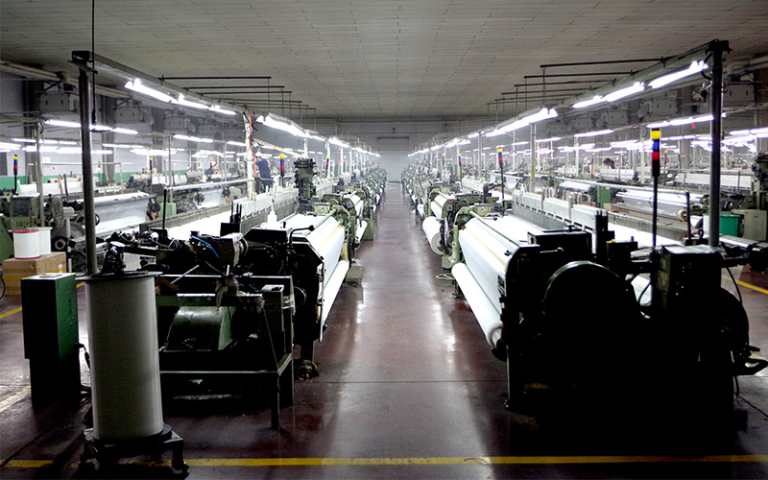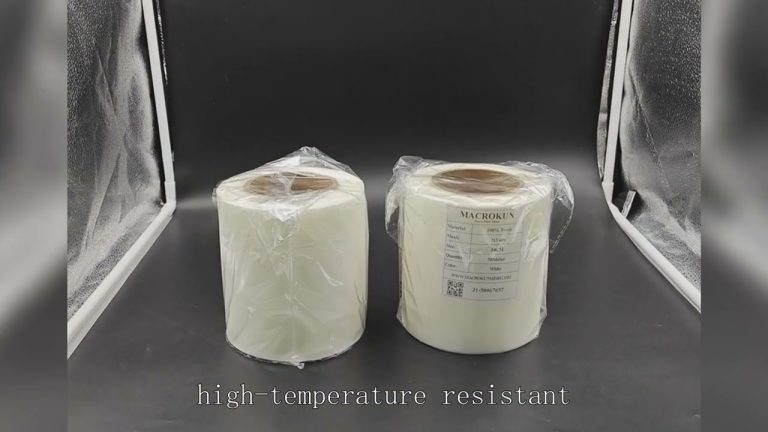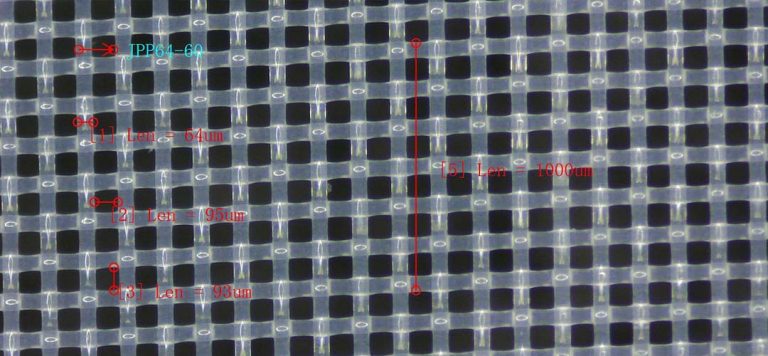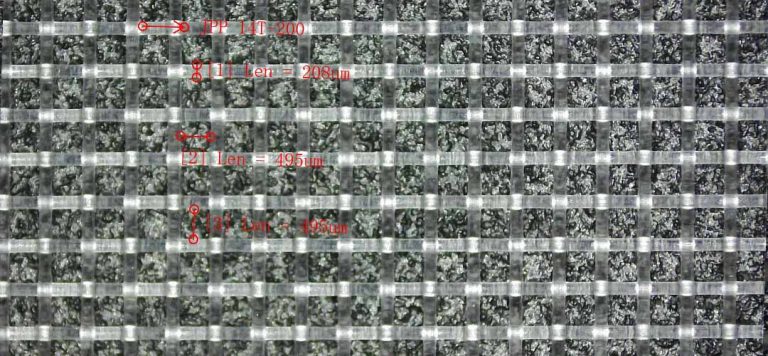Table of Contents
Material Considerations for nylon mesh netting
When it comes to choosing the right nylon mesh netting for custom applications, there are several important factors to consider. Nylon mesh netting is a versatile material that is commonly used in a variety of industries, including agriculture, construction, and manufacturing. It is known for its durability, flexibility, and resistance to chemicals and abrasion. However, not all nylon mesh netting is created equal, and it is important to select the right type of netting for your specific needs.
One of the first things to consider when choosing nylon mesh netting is the mesh size. Mesh size refers to the number of openings per linear inch in the netting. The size of the mesh will determine the level of filtration or protection provided by the netting. For example, smaller mesh sizes are ideal for filtering out fine particles, while larger mesh sizes are better suited for applications where airflow is important. It is important to consider the intended use of the netting when selecting the appropriate mesh size.
Another important factor to consider is the denier of the nylon mesh netting. Denier is a unit of measurement that is used to determine the thickness of the individual strands of nylon in the netting. The higher the denier, the thicker and stronger the netting will be. For applications that require a high level of durability and strength, it is important to choose a nylon mesh netting with a higher denier. On the other hand, for applications where flexibility and lightweight are more important, a lower denier netting may be more suitable.
In addition to mesh size and denier, it is also important to consider the weave of the nylon mesh netting. The weave refers to the pattern in which the individual strands of nylon are intertwined to create the netting. There are several different types of weaves available, including plain weave, twill weave, and leno weave. Each type of weave has its own unique characteristics and is suitable for different applications. For example, a plain weave is a simple over-under pattern that is ideal for applications where a tight, uniform mesh is required. On the other hand, a leno weave is a more complex weave that provides added strength and stability.
When selecting nylon mesh netting for custom applications, it is also important to consider the color of the netting. Nylon mesh netting is available in a wide range of colors, including black, white, and various shades of green and blue. The color of the netting can affect its visibility, as well as its ability to blend in with its surroundings. For example, black netting is often used in applications where visibility is not a concern, while green netting is commonly used in agricultural applications to blend in with the surrounding vegetation.
In conclusion, choosing the right nylon mesh netting for custom applications requires careful consideration of several important factors, including mesh size, denier, weave, and color. By taking the time to evaluate these factors and select the appropriate netting for your specific needs, you can ensure that your custom application is successful and meets your requirements.
Mesh Size and Thickness Selection
When it comes to choosing nylon mesh netting for custom applications, there are several factors to consider to ensure that you select the right material for your specific needs. One of the most important considerations is the mesh size and thickness of the netting. These two factors will determine the overall performance and durability of the netting, so it is crucial to choose wisely.
Mesh size refers to the number of openings per linear inch in the netting. The size of the mesh will determine the level of filtration or protection that the netting provides. For example, a smaller mesh size will offer greater protection against smaller particles or objects, while a larger mesh size will allow for more airflow and visibility. When selecting a mesh size for your custom application, consider the size of the objects or particles that you need to contain or filter. If you are unsure about the appropriate mesh size, it is always best to consult with a professional who can help you determine the best option for your specific needs.

In addition to mesh size, the thickness of the netting is also an important factor to consider. The thickness of the netting will determine its strength and durability, as well as its ability to withstand wear and tear over time. Thicker netting is generally more durable and long-lasting, making it ideal for applications where the netting will be exposed to harsh conditions or heavy use. However, thicker netting may also be heavier and less flexible, so it is important to balance durability with practicality when selecting the thickness of the netting for your custom application.
When choosing nylon mesh netting for custom applications, it is important to consider both the mesh size and thickness to ensure that you select a material that will meet your specific needs. By carefully evaluating these factors and consulting with a professional if necessary, you can choose netting that is durable, reliable, and effective for your intended use.
In conclusion, selecting the right nylon mesh netting for custom applications requires careful consideration of both mesh size and thickness. By choosing a mesh size that is appropriate for the objects or particles you need to contain or filter, and selecting a thickness that balances durability with practicality, you can ensure that you choose netting that will meet your specific needs and provide reliable performance over time. If you are unsure about the best mesh size or thickness for your application, don’t hesitate to seek guidance from a professional who can help you make an informed decision. With the right nylon mesh netting, you can create a custom solution that is both effective and durable for your unique needs.
Understanding Different Weave Patterns
Nylon mesh netting is a versatile material that can be used for a wide range of custom applications. Whether you need it for filtration, separation, or protection, choosing the right weave pattern is crucial to ensure optimal performance. Understanding the different weave patterns available will help you make an informed decision and select the most suitable nylon mesh netting for your specific needs.
One of the most common weave patterns for nylon mesh netting is plain weave. This pattern is characterized by a simple over-under interlacing of warp and weft yarns, creating a balanced and uniform mesh structure. Plain weave is known for its strength and durability, making it suitable for applications that require high tensile strength and resistance to wear and tear. It is commonly used in industrial settings for filtration, sieving, and sifting applications.
Another popular weave pattern is twill weave. In twill weave, the weft yarns pass over and under multiple warp yarns in a diagonal pattern, creating a distinctive diagonal line on the surface of the mesh. This weave pattern offers increased stability and flexibility compared to plain weave, making it ideal for applications that require both strength and flexibility. Twill weave nylon mesh netting is commonly used in the automotive industry for airbag deployment systems and in the medical field for surgical instrument sterilization.
For applications that require a higher level of filtration, Dutch weave is often the preferred choice. Dutch weave is characterized by a combination of fine and coarse warp and weft yarns, resulting in a tight mesh structure with smaller openings. This weave pattern allows for precise filtration and separation of particles, making it suitable for applications such as liquid and gas filtration, as well as particle analysis. Dutch weave nylon mesh netting is commonly used in laboratories, pharmaceutical manufacturing, and food processing industries.
In addition to these commonly used weave patterns, there are also specialty weave patterns available for specific applications. For example, leno weave is a unique pattern that involves twisting adjacent warp yarns together to create an open mesh structure. This weave pattern is commonly used in packaging applications, as it provides excellent breathability and visibility while still maintaining strength and stability.
When choosing nylon mesh netting for custom applications, it is important to consider not only the weave pattern but also other factors such as mesh size, yarn diameter, and material properties. The mesh size refers to the number of openings per linear inch and determines the level of filtration or separation achieved. The yarn diameter affects the strength and durability of the mesh, with thicker yarns providing greater tensile strength. Finally, the material properties of the nylon, such as chemical resistance and temperature tolerance, should be evaluated to ensure compatibility with the intended application.
In conclusion, understanding the different weave patterns available for nylon mesh netting is essential for choosing the right material for custom applications. Whether you need strength, flexibility, filtration, or a combination of these properties, there is a weave pattern that will meet your specific requirements. By considering factors such as mesh size, yarn diameter, and material properties, you can make an informed decision and select the most suitable nylon mesh netting for your needs.
UV Resistance and Durability Factors
When it comes to choosing nylon mesh netting for custom applications, there are several important factors to consider. One of the key considerations is the netting’s UV resistance and durability. UV resistance is crucial for outdoor applications where the netting will be exposed to sunlight, as prolonged exposure can cause the material to degrade over time. Additionally, durability is important for ensuring that the netting can withstand the rigors of its intended use without tearing or breaking.
Nylon mesh netting is a popular choice for custom applications due to its strength, flexibility, and resistance to abrasion. However, not all nylon mesh netting is created equal when it comes to UV resistance and durability. When selecting nylon mesh netting for outdoor applications, it is important to choose a material that has been specifically designed to withstand UV exposure. This will help ensure that the netting maintains its strength and integrity over time, even when exposed to harsh sunlight.
One way to determine the UV resistance of nylon mesh netting is to look for products that have been treated with UV stabilizers. These additives help protect the material from the damaging effects of UV radiation, prolonging its lifespan and ensuring that it remains strong and flexible. Additionally, choosing a netting material that has been tested for UV resistance by a reputable third-party laboratory can provide added assurance of its durability in outdoor settings.
In addition to UV resistance, durability is another important factor to consider when choosing nylon mesh netting for custom applications. Durability is essential for ensuring that the netting can withstand the demands of its intended use without tearing or breaking. When selecting nylon mesh netting for a specific application, it is important to consider factors such as the weight of the material, the size of the mesh openings, and the overall construction of the netting.
For applications that require a high level of durability, it may be necessary to choose a heavier weight nylon mesh netting with smaller mesh openings. This will help ensure that the netting can withstand heavy loads and resist tearing or breaking under pressure. Additionally, choosing a netting material that has been reinforced with additional layers or coatings can provide added strength and durability for more demanding applications.
When selecting nylon mesh netting for custom applications, it is important to consider both UV resistance and durability to ensure that the netting will perform effectively in its intended environment. By choosing a material that has been specifically designed to withstand UV exposure and selecting a construction that is durable and strong, you can ensure that your nylon mesh netting will provide reliable performance for years to come. Whether you are using nylon mesh netting for agricultural, industrial, or recreational applications, selecting a high-quality material that offers both UV resistance and durability will help you achieve the best results for your custom project.
Customization Options for Nylon Mesh Netting
Nylon mesh netting is a versatile material that can be used for a wide range of applications, from industrial to recreational. When it comes to choosing nylon mesh netting for custom applications, there are several factors to consider to ensure that you get the right product for your specific needs.
One of the first things to consider when choosing nylon mesh netting is the size of the mesh. The size of the mesh will determine the level of filtration or protection that the netting provides. For example, if you are using the netting to protect plants from birds or insects, you will want a smaller mesh size to prevent them from getting through. On the other hand, if you are using the netting for industrial purposes, you may need a larger mesh size to allow for proper airflow.

Another important factor to consider is the weight of the netting. The weight of the netting will determine its durability and longevity. If you are using the netting in a high-traffic area or in a harsh environment, you will want a heavier weight netting that can withstand wear and tear. On the other hand, if you are using the netting for a temporary or light-duty application, a lighter weight netting may be sufficient.
In addition to size and weight, you will also need to consider the color of the netting. Nylon mesh netting is available in a variety of colors, which can be important for certain applications. For example, if you are using the netting for decorative purposes or to match a specific color scheme, you will want to choose a color that complements your design. On the other hand, if you are using the netting for industrial purposes, you may want to choose a neutral color that will not show dirt or stains.

When choosing nylon mesh netting for custom applications, it is also important to consider the construction of the netting. Nylon mesh netting can be woven or knitted, with each type of construction offering different benefits. Woven netting is typically stronger and more durable, making it ideal for heavy-duty applications. Knitted netting, on the other hand, is more flexible and stretchy, making it ideal for applications that require a tighter fit or more give.
Finally, when choosing nylon mesh netting for custom applications, it is important to consider any additional features or treatments that may be necessary. For example, if you are using the netting outdoors, you may want to choose a netting that is treated for UV resistance to prevent fading and deterioration from sun exposure. If you are using the netting in a wet environment, you may want to choose a netting that is treated for water resistance to prevent mold and mildew growth.
In conclusion, when choosing nylon mesh netting for custom applications, it is important to consider factors such as mesh size, weight, color, construction, and additional features. By taking these factors into account, you can ensure that you get the right netting for your specific needs and applications.
